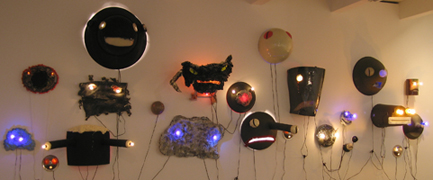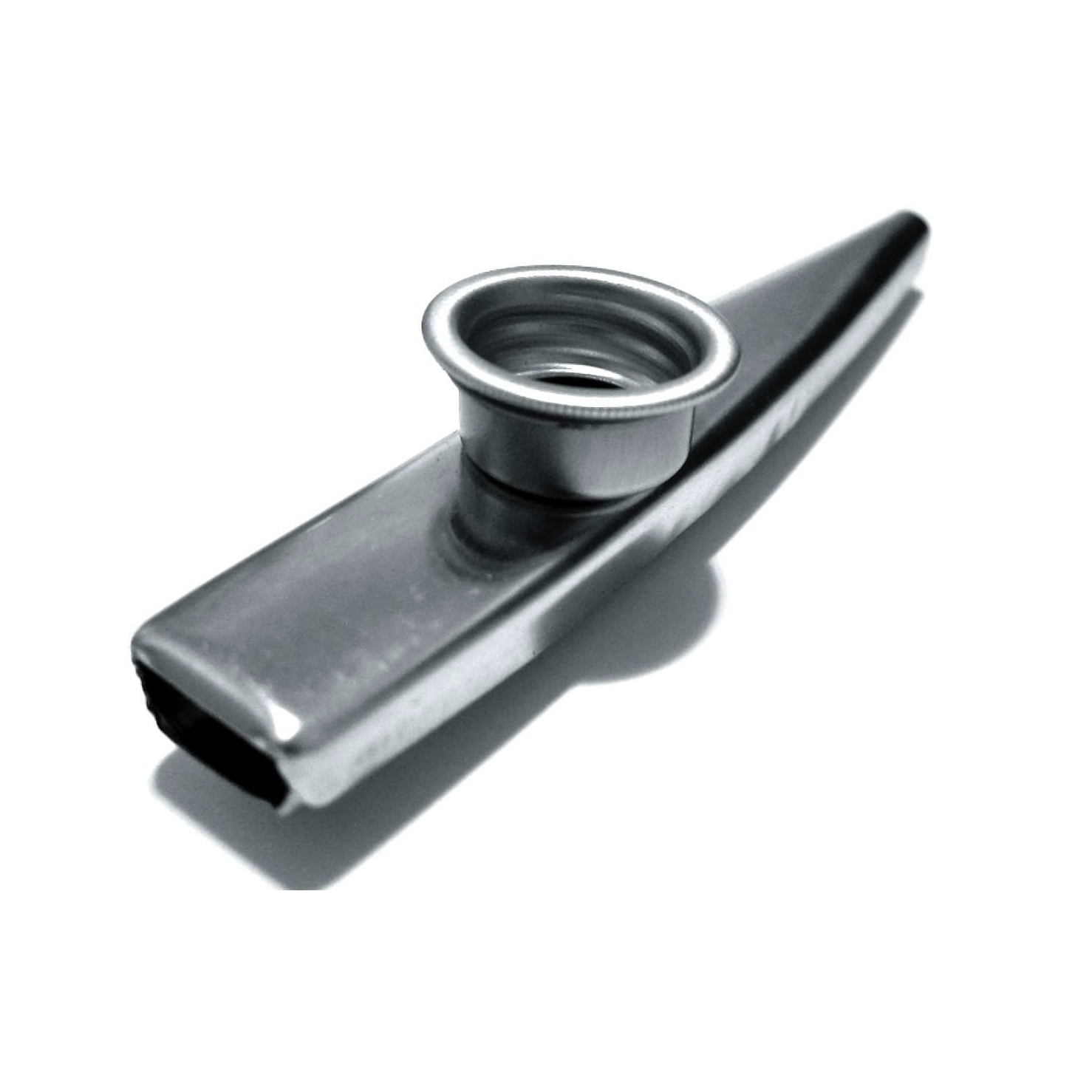Three weeks ago me and a good friend were standing in front a piece of art by Jon Pylypchuck at the museum of contemporary art in Montréal. The exhibition is still on until January 4th, and I recommend checking it out.

So looking at one of the faces, my friend asked the following question, which to me was very confusing:
"Do you think this is a frown or a moustache?"
Whatever 'this' was, it was clearly below the eyes, and also, the facial expression was sad--so how could it be a frown? My understanding of frown was what I later found in Webster's online dictionary:
1 : an expression of displeasure
2 : a wrinkling of the brow in displeasure or concentration
When I expressed my puzzlement, I learned that frown, in fact, also means the opposite of smile: a downward facing mouth expressing sadness, and that this is in fact the most common/salient meaning of the word, at least to some. What I found astonishing about this is that after ten years of living in North America I would have such a different notion of frown, especially since the second meaning expresses a completely different emotion---I think it's rare that one is wrong about the basic emotion that a word stands for, there's just usually a lot of information about what emotion is intended to be expressed in the context.
The sad and mouth-oriented reading of frown seems a recent development, at least it doesn't seem to have made it into any dictionaries that I consulted. Charles Darwin, who wrote about frowns in The Expression of the Emotions in Man and Animals, clearly didn't think of the mouth when thinking of frowning:
The currogators, by their contraction, lower the eyebrows and bring them together, producing vertical furrows on the forehead--- that is, a frown. Darwin's understanding of _frown_ is also how the word is used in the study of facial expressions today. Here's what Paul Ekman writes in the _Oxford Companion to the Body_: > _frown_ Produced primarily by the action of the corrugator muscle, which lowers the brows and pulls them together. In adolescents and adults, a vertical wrinkle often appears on the brow, and there may also be a horizontal wrinkle across the bridge of the nose. > > Charles Darwin in his book The Expression of Emotion in Man and Animals called the corrugator the ‘muscle of difficulty’. Darwin was quite correct: frowning occurs with many kinds of difficulty, mental or physical. People who lift something very heavy will frown when doing so, as will people who are having a difficult time remembering something or figuring out the answer to a difficult mental task. Frowning is shown during concentration, perplexity, and determination to accomplish a difficult task. Darwin noted that lowering the brow provides a natural sunshade, and indeed people do frown when they are in bright sunlight without sunglasses. > > When people frown, they are often perceived by others to be feeling unpleasant, resentful, or angry, although this is often not the case. This interpretation may occur because the frown is part of the anger expression, which also typically involves glaring eyes and tense lips. A poll among a bunch of other people revealed that every single non-native speaker present we asked had the dictionary definition of frown (as involving the brows and/or wrinkling the forehead and expressing disapproval or displeasure). and that every single Canadian reported the sad/opposite-of-smiling-mouth as the first expression that comes to mind. [According to wikipedia](http://en.wikipedia.org/wiki/Frown) the 'mouth-meaning' is more common in North America. Most of the foreigners we consulted (including me) started out learning British English, so that would make sense. But then, when polling various speakers from Donegal, Belfast, and London on a recent trip, I got very mixed results--the sad frown seems to be more wide-spread than wikipedia suggests. So there are two interesting questions: When did the sad frown emerge, and why are 2nd language learners not picking up on it? A [Google image search](http://www.google.ca/images?q=frown&biw=1338&bih=897) leaves little doubt that the sad frown is the dominant reading, at least among online images in Canada (the UK results weren't any different), even though this meaning hasn't made it yet into the dictionaries. This [thread](http://www.webmasterworld.com/forum9/10251.htm) shows that we were not the only ones to have run into this puzzle. There is also a hypothesis that is mentioned in this thread: maybe it's the internet emoticon, often labeled 'frown' :( that is responsible for the spread of the new reading. But virtually everyone we asked insisted that the sad reading predates their exposure to internet emoticons. One possible explanation is that the rise of the [smiley](http://en.wikipedia.org/wiki/Smiley) in the early 70s created the need for an opposite, the frownie-face with a downward-pointing mouth. The word _frown_ would have been a natural choice, since 'displeasure' as an emotion is already in an opposition with 'pleasure,' which is expressed by smiling, so extending the word to also include a sad expression may have been an easy stretch. I thought the [new Google database of word usage in books](http://www.nytimes.com/2010/12/17/books/17words.html?_r=1&hp) might help to shed more light on this. I learned among other things that at least since the 70s there are adhesive frownies (to prevent frown-lines between the eye-brows) and frownie-paste (same purpose), and some suggestive evidence that 'frownies' and 'smilies' have been on the rise for a few decades. But I also learned about mouth frowns that were treated as early as 1974 with [facercises](http://books.google.com/books?id=r7cGWaXd_lcC&q=%22frown%22+corners+of+the+mouth&dq=%22frown%22+corners+of+the+mouth&hl=en&ei=cyQOTd-iBIygnQfFpaSgDg&sa=X&oi=book_result&ct=result&resnum=9&ved=0CFEQ6AEwCDgK): > Keep sucking in the corners of your mouth and visualize the corners turning up in a tiny smile and then turning down in a tiny frown. Overall, my impression is, that in writing (as opposed to labels of visual images), the use of _frown_ in the 'displeasure' and furrowing-of-brows-sense is still the more common one today--maybe the reason why non-native speakers don't seem to acquire the 'sad' meaning is because while they're exposed to a lot of 'frowns' in novels and other written input, no one ever tells us: 'And now draw a frown!' [12/19/10] I found some instances of mouth-frowns predating the 70s, so maybe it's not the marketing of the smiley that brought on this reading. However, the relation to drawing may have something to it. One of the earliest uses I could find is in a [1961 book on drawing for children](http://books.google.com/books?id=kzzhAAAAMAAJ&q=%22frown%22+corners+of+the+mouth&dq=%22frown%22+corners+of+the+mouth&hl=en&ei=qSYOTbLqD4ionQeSvISuDg&sa=X&oi=book_result&ct=result&resnum=3&ved=0CC8Q6AEwAjgy), where I found this advice: > The mouth has a lot to do with expression. If the corners of the mouth are turned down, you get a frown. The earliest mouth-frown I could find while browsing google books was, fitting with the season, in a 1955 xmas play called '[Santa's spectacles](http://books.google.com/books?id=jggAuOXDoGYC&pg=PA26&dq=%22frown%22+corners+of+the+mouth&hl=en&ei=QCcOTe_kDMbVnAeO27DCDg&sa=X&oi=book_result&ct=result&resnum=2&ved=0CDAQ6AEwATgK):' > Your mouth has been down in a frown for so long that you just couldn't be happy, and you just couldn't see. Anyone with an earlier instance?
